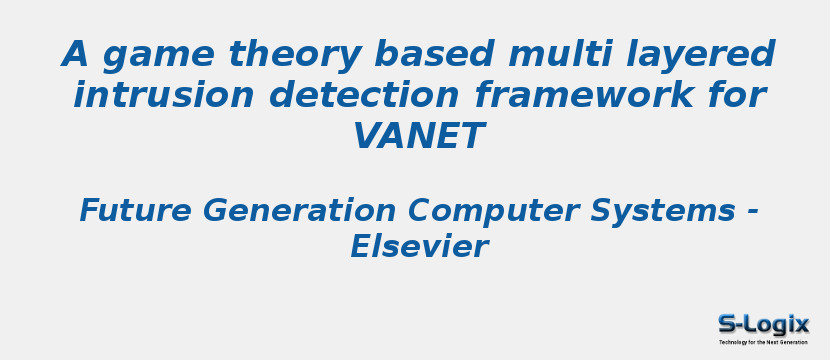Research Area: Vehicular Ad Hoc Networks
Vehicular Ad-hoc Networks (VANETs) are vulnerable to various type of network attacks like Blackhole attack, Denial of Service (DoS), Sybil attack etc. Intrusion Detection Systems (IDSs) have been proposed in the literature to address these security threats. However, high vehicular mobility makes the process of formulating an IDS framework for VANET a difficult task. Moreover, VANETs operate in bandwidth constrained wireless radio spectrum. Therefore, IDS frameworks that introduce significant volume of IDS traffic are not suitable for VANETs. In addition, dynamic network topology, communication overhead and scalability to higher vehicular density are some other issues that needs to be addressed while developing an IDS framework for VANETs. This paper aims to address these issues by proposing a multi-layered game theory based intrusion detection framework and a novel clustering algorithm for VANET. The communication overhead of the IDS is reduced by using a set of specification rules and a lightweight neural network based classifier module for detecting malicious vehicles. The volume of IDS traffic is minimized by modeling the interaction between the IDS and the malicious vehicle as a two player non-cooperative game and adopting a probabilistic IDS monitoring strategy based on the Nash Equilibrium of the game. Finally, the proposed clustering algorithm maintains the stability of the IDS framework, which ensures that the framework scales up well to networks with higher vehicular densities. Simulation results show that the proposed framework achieves high accuracy and detection rate across wide range of attacks, while at the same time minimizes the overall volume of intrusion detection related traffic introduced into the vehicular network.
Keywords:
Author(s) Name: Basant Subba,Santosh Biswas,Sushanta Karmakar
Journal name: Future Generation Computer Systems
Conferrence name:
Publisher name: ELSEVIER
DOI: 10.1016/j.future.2017.12.008
Volume Information: Volume 82, May 2018, Pages 12-28
